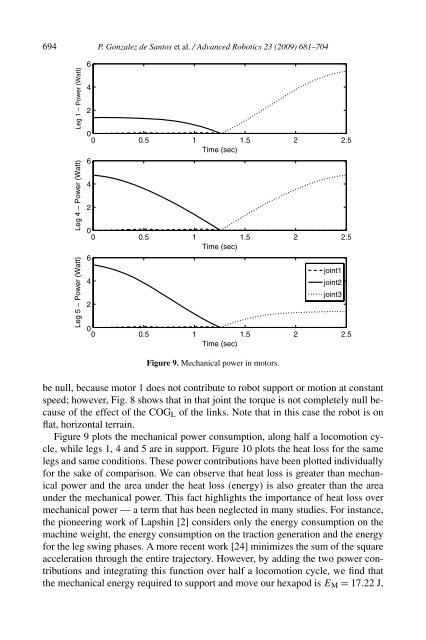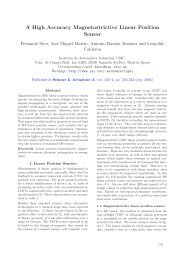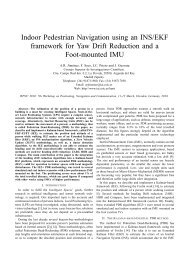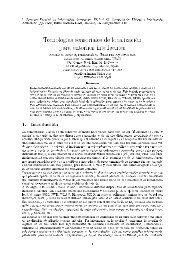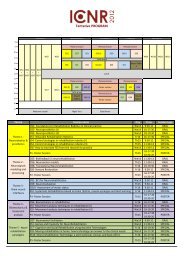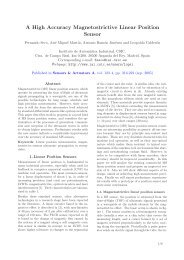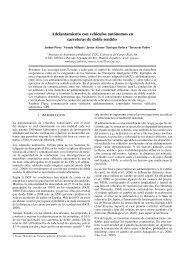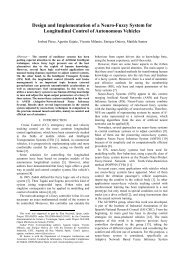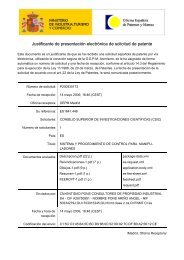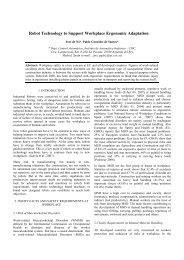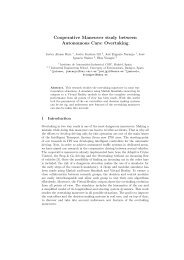Full paper Minimizing Energy Consumption in Hexapod Robots
Full paper Minimizing Energy Consumption in Hexapod Robots
Full paper Minimizing Energy Consumption in Hexapod Robots
You also want an ePaper? Increase the reach of your titles
YUMPU automatically turns print PDFs into web optimized ePapers that Google loves.
694 P. Gonzalez de Santos et al. / Advanced Robotics 23 (2009) 681–704Figure 9. Mechanical power <strong>in</strong> motors.be null, because motor 1 does not contribute to robot support or motion at constantspeed; however, Fig. 8 shows that <strong>in</strong> that jo<strong>in</strong>t the torque is not completely null becauseof the effect of the COG L of the l<strong>in</strong>ks. Note that <strong>in</strong> this case the robot is onflat, horizontal terra<strong>in</strong>.Figure 9 plots the mechanical power consumption, along half a locomotion cycle,while legs 1, 4 and 5 are <strong>in</strong> support. Figure 10 plots the heat loss for the samelegs and same conditions. These power contributions have been plotted <strong>in</strong>dividuallyfor the sake of comparison. We can observe that heat loss is greater than mechanicalpower and the area under the heat loss (energy) is also greater than the areaunder the mechanical power. This fact highlights the importance of heat loss overmechanical power — a term that has been neglected <strong>in</strong> many studies. For <strong>in</strong>stance,the pioneer<strong>in</strong>g work of Lapsh<strong>in</strong> [2] considers only the energy consumption on themach<strong>in</strong>e weight, the energy consumption on the traction generation and the energyfor the leg sw<strong>in</strong>g phases. A more recent work [24] m<strong>in</strong>imizes the sum of the squareacceleration through the entire trajectory. However, by add<strong>in</strong>g the two power contributionsand <strong>in</strong>tegrat<strong>in</strong>g this function over half a locomotion cycle, we f<strong>in</strong>d thatthe mechanical energy required to support and move our hexapod is E M = 17.22 J,


